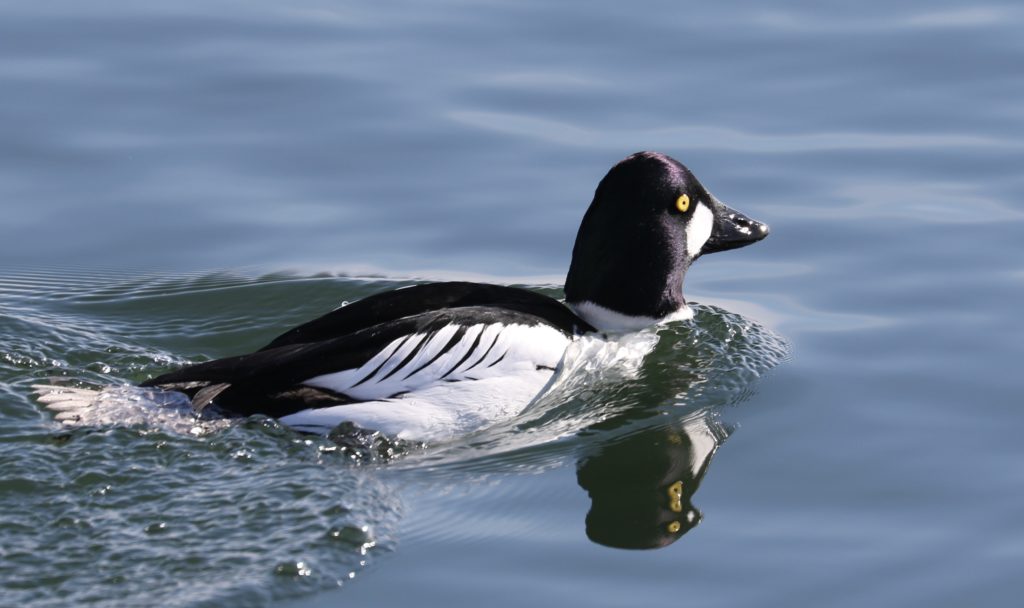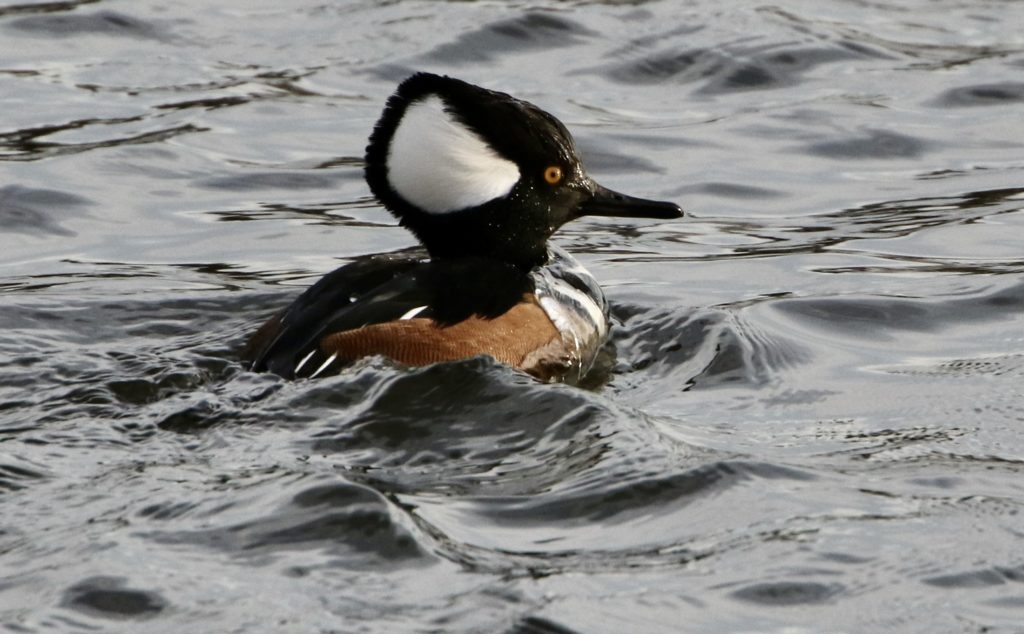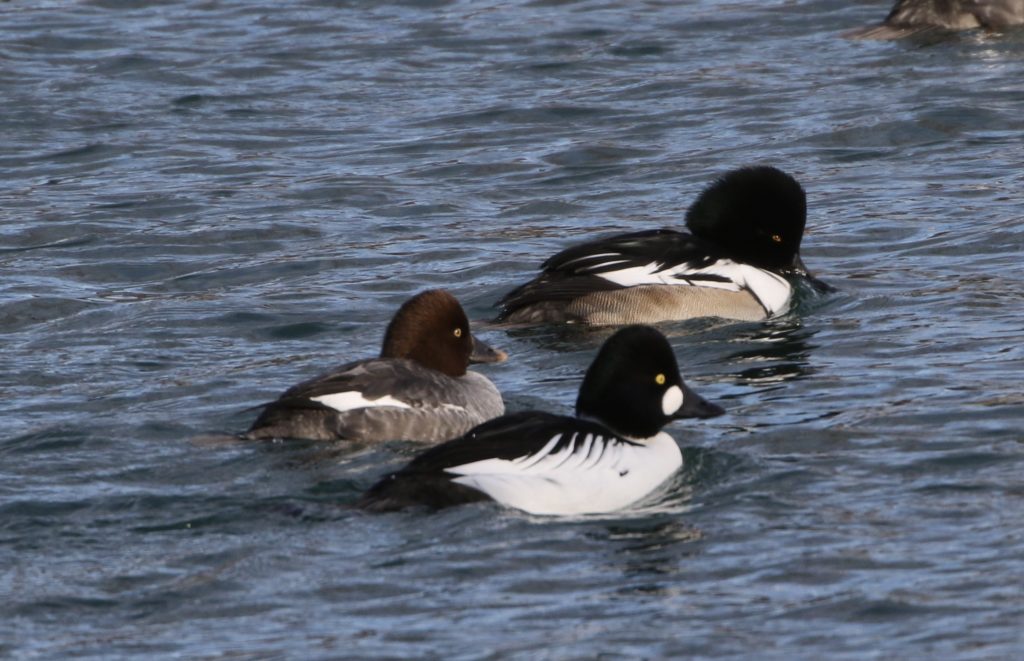For the second year in a row, a rare hybrid duck has decided to spend the winter at Ashbridges Bay on Toronto’s waterfront. Last year, this male duck, or drake, was still a juvenile and had a juvenile’s dull-colored plumage. This year, it has acquired its adult breeding plumage, and, as the photo above shows, it’s a remarkable looking bird, with a dramatic black crest and rust-coloured flanks.
Its parentage brought together two very different types of duck. The Common Goldeneye (Bucephala clangula) is a broad-shouldered bruiser of a diving duck patterned in black and white. It has a blunt bill shaped like a rubber doorstop.

The Hooded Merganser (Lophodytes cucullatus), on the other hand, is a more petite duck with a knitting-needle of a bill and a flamboyant crest, which it can raise or lower according to mood.

Our hybrid duck, which perhaps we should call the Hooded Goldeneye, will spend its life working through its own peculiar identity crisis. As things stand now, sometimes it associates with the Common Goldeneyes, and at other times, it hangs with the Hooded Mergansers. Even though it’s probably sterile, that doesn’t mean this duck won’t try to mate. On what side of the species divide will it choose to partner? Stay tuned for further developments.

Another word …
I mentioned in my last post that an article of mine on “Thin Places” had been accepted for publication in the online magazine The Journal of Wild Culture. That issue has now appeared, and, if curious, you can read the essay here.

Fascinating and poignant, Ed. And so relatable. Most of us spend our lives working through our own peculiar identity. Thanks for sharing this beautiful bird’s tale.
Thanks, Betsy–you really got to the heart of the article!
So true, Betsy!
So fascinating, Ed. I see lots of Goldeneye and some mergansers here on Lake Ontario, but haven’t noticed any hybrids. There’s also a gang of brown ducks that stick together in the midst of the mallards.
Great to hear from you, Kim–and I’m glad you enjoyed the post. Those brown ducks may actually be Black Ducks. They’re closely related to Mallards and will sometimes breed with them. The hybrids often look like a female Black Duck with a slash of green on the head.
On a similar theme of identity, at the cottage this summer, I watched a male mallard gradually molt, losing its green feathers and taking on the plumage of a female. The duck kept mostly to itself all summer. I’ve read about female birds taking on male plumage for protection but not the other way around. So interesting.